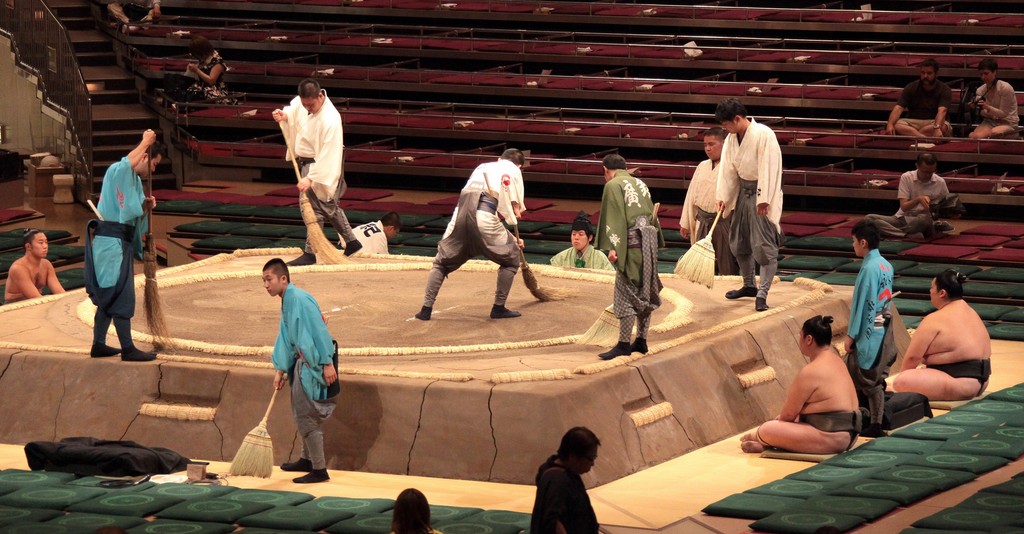DOHYO PREPARATION DU RING
Dohyō (土俵) : Plateforme carrée faite d'argile tassée et d'une hauteur de 34 à 60 cm sur laquelle a lieu le combat sumo. Un cercle de diamètre 4,55 m, fait à l'aide de ballots de paille solidement ancrés dans la plateforme, délimite l'aire de combat.
L'accès au dohyō est interdit aux femmes même en dehors du combat, selon une ancienne tradition shinto considérant le sang comme une souillure (kegare), et donc les femmes potentiellement impures du fait des menstruations. Le 19 septembre 2007, pour la première fois dans l'histoire du sumo professionnel, une spectatrice pose le pied dans l'arène, sans toutefois atteindre la zone de combat car stoppée par un lutteur.
---------------------------------------------
The dohyō (土俵) is the ring in which sumo wrestling bouts are held. A modern dohyō is a circle of rice-straw bales 4.55 meters in diameter, mounted on a square platform of clay 6.7m on a side, and 34 to 60 cm high. The surface is covered by sand.
A new dohyō is built prior to each tournament by the yobidashi, who are responsible for this activity. The dohyō is removed after each tournament, and in the case of Nagoya, pieces are taken home by the fans as souvenirs. The yobidashi also build the dohyō for training stables and sumo touring events. The diameter of the ring is 15 shaku (4.55 meters), which increased from 13 shaku (3.94 meters) in 1931.
The rice-straw bales (tawara (俵)) which form the ring are one third standard size and are partially buried in the clay of the dohyō. Four of the tawara are placed slightly outside the line of the circle. In olden times this was to allow rain to run off the surface, when sumo tournaments were held outdoors in the open. Today a wrestler under pressure at the edge of the ring will often try to move himself round to one of these points to gain leverage in order to push back more effectively against the opponent who is trying to force him out.
At the center are two white lines, the shikiri-sen (仕切り線), behind which the wrestlers must position themselves at the start of the bout. Around the ring is finely brushed sand called the ja-no-me (蛇の目 snake's eye), which can be used to determine if a wrestler has just touched his foot, or another part of his body, outside the ring.
